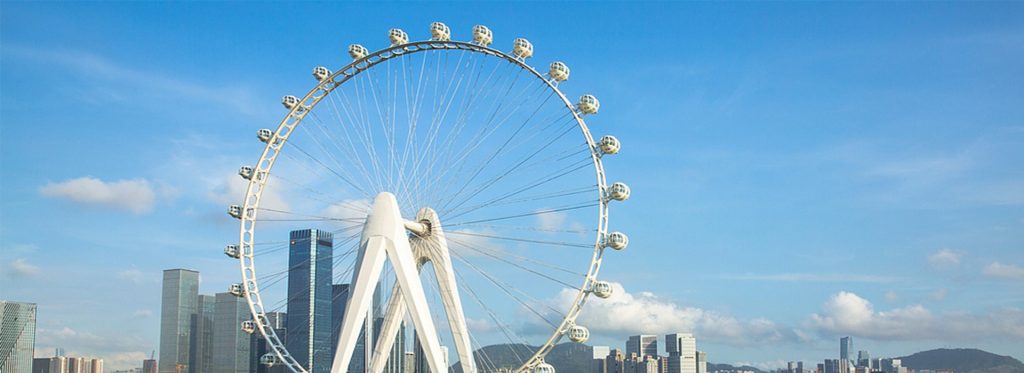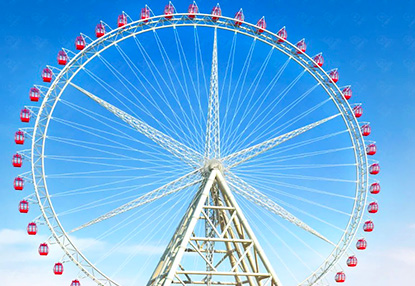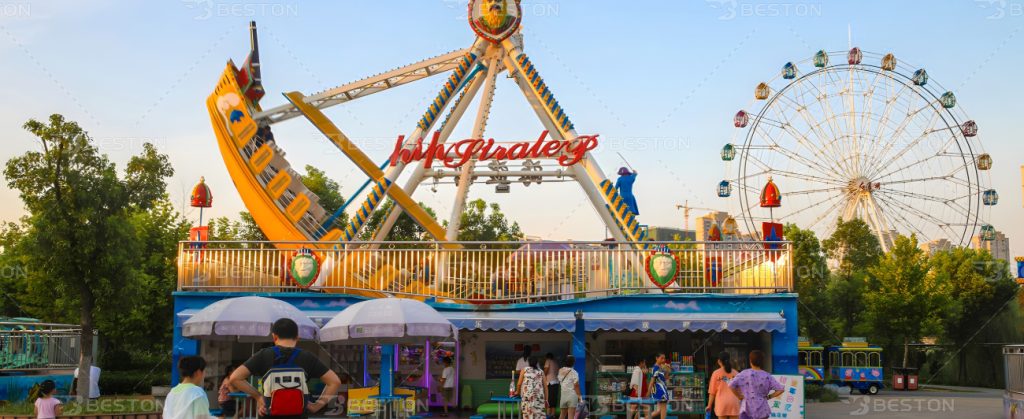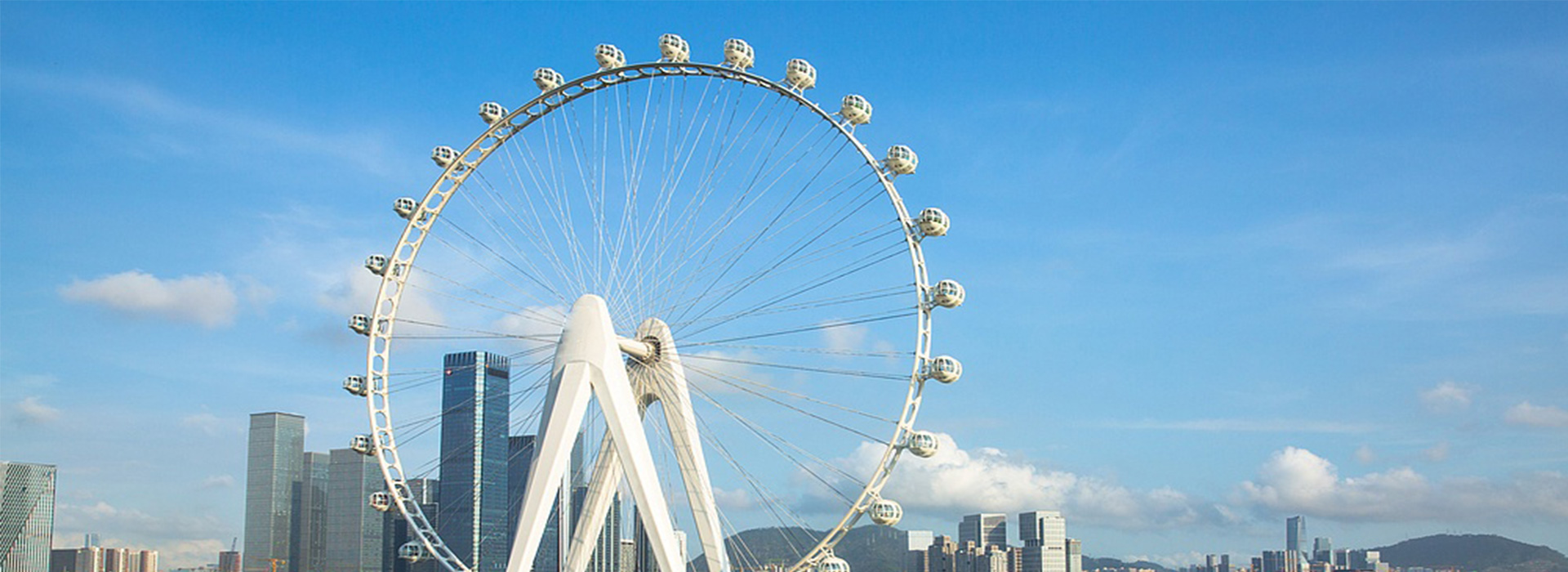Understanding Site-Specific Ride Requirements
Every venue has unique spatial, demographic, and thematic demands when it comes to selecting amusement equipment. A ride that performs well in a beachfront park may not deliver the same ROI in a commercial plaza or city square. Successful equipment placement is not about selecting the most thrilling ride—it’s about choosing the most appropriate one for the venue’s context.
Factors like available footprint, local climate, zoning regulations, audience expectations, and business objectives all determine what type of ride fits best. Whether the goal is to maximize visibility, increase guest dwell time, or enhance thematic consistency, equipment decisions must align with the venue’s master plan.
Urban Parks: Compact Layouts, High Footfall
Urban amusement zones—often found inside shopping malls, rooftops, or limited open spaces—require rides with compact layouts and high visual impact. These venues prioritize aesthetics and guest engagement within confined boundaries. Crowd density is typically high, so equipment needs fast cycle times, low maintenance downtimes, and strong photo appeal.
In this context, working with an experienced ferris wheel manufacturer becomes essential. Vertical rides like small or mid-size wheels are ideal for urban integration. They act as visual anchors that can be seen from multiple levels and offer panoramic views of the surrounding cityscape. These wheels not only attract attention from passersby but also add vertical value to limited land use.

Coastal and Scenic Spots: Leveraging the Landscape
Scenic waterfronts, theme parks, and mountainous resorts offer ample space and strong tourism pull. These environments benefit from equipment that integrates with the natural surroundings while delivering landmark status. Attractions here must balance entertainment with experiential value—offering memorable views, gentle thrill, and broad age appeal.
A large ferris wheel fits this profile. Positioned near coastlines, riversides, or cliff edges, it enhances the skyline and becomes a magnet for both daytime sightseeing and nighttime photography. Lighting systems, climate-resistant materials, and silent mechanical systems are critical for these open-air environments. These wheels often become iconic structures that transcend their function as rides, embodying a destination’s identity.

Family-Oriented Parks: Mixed Age Appeal
In suburban parks or community entertainment centers, equipment selection must prioritize inclusivity. These venues cater to school groups, family outings, and multi-generational gatherings. Here, rides must appeal to children, parents, and grandparents alike—requiring mild thrills, high safety ratings, and interactive theming.
Manufacturers like beston rides offer broad portfolios that include both mechanical and interactive rides for all ages. Family coasters, spinning cups, and bumper cars are standard fare. More importantly, these manufacturers often provide modular solutions that can be scaled or re-themed over time, offering long-term operational flexibility.
Resort Zones and Destination Parks: Signature Experiences
Destination parks rely on signature attractions to differentiate themselves. These venues often seek high-capacity, high-drama rides to anchor their themed areas. Their goal is not just entertainment, but immersion—creating unforgettable moments that enhance the brand narrative.
The pirate boat ride is one such attraction. When integrated into a pirate-themed lagoon or adventure zone, it offers a rhythmic swinging motion that is both thrilling and visually synchronized. It pairs well with elaborate backdrops, water effects, and interactive storylines. The ride’s simplicity in function belies its ability to entertain large volumes of guests with minimal operational complexity.

Temporary Venues and Carnivals: Mobility and Speed
Portable rides serve a different niche entirely. For carnivals, mobile fairs, and seasonal setups, the focus shifts to rapid installation, ease of transport, and low dependency on fixed infrastructure. Equipment must be modular, durable, and certified for frequent assembly-disassembly cycles.
In such cases, medium-scale rides with foldable structures and trailer integration take priority. These include mini wheels, compact swing rides, and mobile drop towers. The engineering emphasis is on mechanical reliability, simplified hydraulic systems, and compliance with local ride safety standards that vary by region.
Commercial Plazas and Real Estate Developments
As mixed-use developments evolve, real estate investors are increasingly integrating amusement rides into commercial complexes to boost foot traffic. Rides here serve dual functions—leisure and marketing. Their role is to encourage extended visits, increase shopping frequency, and support placemaking strategies.
Low-noise, visually appealing rides are prioritized. Aesthetic cohesion with surrounding architecture is essential. In such venues, interactive fountains, mini trains, and small observation wheels offer the right balance of entertainment and urban elegance. These rides can also be embedded with smart ticketing and data systems to collect visitor insights.
Customization Based on Cultural Context
Cultural expectations influence ride perception. What’s considered a thrill ride in one region might be seen as moderate in another. Aesthetic preferences, music choices, and ride theming must align with local customs and visual languages. Cultural compatibility ensures that rides are embraced rather than rejected by the target demographic.
Working with global manufacturers who provide localization services—such as multilingual interfaces, customized signage, and regional theming packages—helps ensure smoother integration. These services are especially critical in markets with distinct social or religious norms regarding gender, dress, or mixed-use spaces.
Conclusion
Amusement equipment must be carefully matched to venue characteristics in order to maximize visual impact, guest satisfaction, and operational efficiency. Whether installing a large ferris wheel in a scenic zone, integrating a pirate boat ride into a themed adventure park, or collaborating with a leading ferris wheel manufacturer for an urban project, equipment selection is never one-size-fits-all. Tailored planning, cultural adaptation, and collaboration with experienced partners like beston rides ensure each venue delivers the right balance of attraction, storytelling, and profitability.

